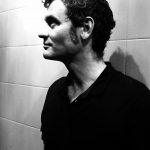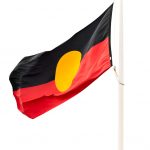Lest We Forget: The Indigenous Defence of Land

The Frontier Wars raged across the continent of Australia from 1788 – the year European occupiers arrived – right up until 1934. For the most part these battles, massacres and acts of resistance have been forgotten and remain unacknowledged to this date.
It’s traditionally been estimated that around 20,000 Indigenous people were killed during the violence on the pastoral frontiers alone, while around 2,500 – mainly British – Europeans were killed.
However, historian Henry Reynolds puts the figures at around 30,000 Indigenous people and 5,000 Europeans, while recent research by the University of Queensland suggests that around 60,000 Aboriginal and Torres Strait Islander people were killed.
Instituted silence
Despite British claims of terra nullis – that the island was uninhabited – there were an estimated 750,000 Indigenous people living across the continent at the time Europeans arrived. By 1900, the figure had fallen by 90 percent.
Introduced diseases were a major contributor to the continent’s First Peoples’ declining population. In particular, smallpox ravaged Indigenous communities throughout NSW, Victoria and Queensland. There has even been speculation that the disease may have been introduced intentionally.
The frontier wars which accompanied the epidemics of disease, were omitted from Australian history books from the late 19th century until the 1960s. But this “great Australian silence” is now being lifted by so-called “black armband” historians like Henry Reynolds and Stuart Macintyre.
Conflicts in New South Wales
Incidents began occurring around the Sydney area in February and March 1788.
At Woolloomooloo Bay, British marines fired upon some local Eora people, who were said to be stealing ship making tools. Eora people wounded British convicts in the bush near the settlement of Sydney Cove – convict Peter Burn was reportedly speared and killed by the Eora.
Large scale wars then broke out around the Hawkesbury and Nepean River regions between 1795 and 1816. A series of three conflicts between the British and local Aboriginal peoples were fought using guerrilla tactics, but there were also several conventional battles.
The Indigenous people were led by noted Aboriginal warrior Pemulwuy and his son Tedbury, as they conducted raids on sheep stations around the Hawkesbury and also in the Parramatta region. The British defeated the local people, who were subsequently dispossessed of their lands.
Another significant battle was the 1824 Bathurst War, fought between the Wiradjuri nation and European settlers.
After an initial incident where several Wiradjuri people were shot and killed by a farmer for taking potatoes, local resistance leader Windradyne led a series of raids upon nearby stations, which resulted in the deaths of seven Europeans.
Governor Brisbane declared martial law in the Bathurst region in August, which enabled Europeans to kill the local people without having to stand trial. Around 100 Wiradjuri people were killed in the space of a few months.
Martial law was lifted in December, after many Wiradjuri people had surrendered to the British government.
The Black War of Tasmania
The British colonists were slow in occupying the island of Tasmania. They initially established two small posts on the Derwent and Tamar rivers. But in the 1820s, they began pastoral expansion into the island’s interior, which resulted in the Tasmanian Black War of 1824 to 1831.
As their lands were being invaded, Aboriginal people responded by counter-attacking British stations. There were 20 counter-attacks in 1824, and this soared to 259 in 1830. The incidents resulted in 223 colonists being killed.
Governor Arthur declared martial law in the late 1820s, providing legal immunity for the killing of Indigenous people.
Then, in 1830, a six-week military offensive was carried out known as the Black Line. 2,200 British soldiers and civilians formed a line across the island and moved south, killing Aboriginal people and driving them down towards the Tasman Peninsula.
The war almost destroyed the entire Indigenous population of the island. Today, there’s debate amongst historians as to whether it constitutes genocide.
The war came to an end in December 1831, and the remaining 200 Aboriginal people were sent to Flinders Island.
The violence in Queensland
The frontier wars in Queensland are said to have been particularly bloody. The most frequent reports of shootings and massacres of Indigenous people occurred in that state, along with the three deadliest massacres of Europeans.
It’s estimated that the Queensland Native Police – a force consisting of Aboriginal units under the command of a European officer – caused the deaths of around 24,000 Indigenous people.
In the 1840s, Indigenous people in Kilcoy and Whiteside were given gifts of flour laced with strychnine. The poisonings claimed the lives of over 150 people.
The 1901 Skull Hole massacre at Bladensburg Station near Winton is one of the greatest atrocities of the frontier wars.
Sergeant Moran of Winton police station set out to find those who had killed a European man. During his investigations, he was attacked by local Indigenous people.
In response, Winton sent out native police who murdered around 200 Koa people.
The push to lift the silence
In 2014, as the federal government planned to commemorate the 100th anniversary of the First World War, historians and other members of the community were advocating for the Australian War Memorial in Canberra to acknowledge the frontier wars.
However, the memorial’s director Brendan Nelson insists this will never happen.
Tasmania’s Museum of Old and New Art announced earlier this month that it plans to establish a National Truth and Reconciliation Art Park that will acknowledge the nation’s forgotten wars.
Professor Mick Dodson – a Yawuru man – says it’s high time Australia admits that there’s been a “whitewashing” of the nation’s history and that the wars fought across the continent are acknowledged. “If we own up to this, it frees our hearts from this dark past,” he said. “That’s when we will be mature as a nation.”
However, Hobart Lord Mayor Sue Hickey doesn’t support the memorial park. The mayor says it would be a “guilt-ridden” place, adding that she “didn’t kill the Aborigines.”
It seems that some of our Australia’s leaders are still not willing to acknowledge the bloody secret at the heart of the nation.







